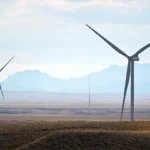Energy News Beat
The “rush-to-green” policies of the Biden administration and congressional Democrats are based on a false premise that intermittent power generation can meet energy demand in the United States. This belief, and its forced reliance on China for the components necessary to implement the policy, is detrimental to Americans’ standard of living as well as our safety.
As the chairman of the House Energy, Climate, and Grid Security Subcommittee of the Energy and Commerce Committee, most of my colleagues and I support renewable energy from sources like wind, solar, geothermal, and, potentially, hydrogen. We also support clean, renewable energy that comes from one of the oldest sources of energy production — hydropower.
Renewables will be a part of our energy matrix, but they must work in tandem with always-on baseload power generation. This is due to renewables’ ability to only generate power intermittently, not 24/7/365. From households to municipalities to manufacturing, America relies upon always-on, always available electricity 24 hours a day, seven days a week, 365 days a year.
Currently, renewables cannot provide that always-on, always-available energy that our nation requires. In its “rush-to-green,” the administration forced certain energy generation, like coal and natural gas, to be taken offline or made it extremely difficult to operate.
The Biden administration hampers coal and natural gas power generation through excessive regulation, slow permitting and the failure to allow the buildout of delivery infrastructure like pipelines.
Meanwhile, the administration is using subsidies to fast-track renewable projects like wind and solar, picking them as winners in the energy market despite their clear disadvantages compared to conventional power generation.
This is a problem, even for people who like renewables, because of two words — intermittent and dispatchable.
Wind and solar are intermittent producers, generating electrical energy when the wind blows and the sun shines. Dispatchable energy sources are those that are readily available to be ramped up or down to produce power to meet demand — ergo coal, natural gas, fuel oil, hydroelectric generation and, hopefully soon, small modular reactors.
Assuming an optimal sunny day with no climatic events like thunderstorms or cloud cover in my home state of South Carolina, solar generation makes up just north of 8% of our daily energy matrix, and that is only for one-half of the day. Solar generation begins each day at zero before the sun rises and ends each day at zero when the sun sets.
There is currently no on-shore or offshore wind generation in South Carolina. However, wind faces similar problems of intermittency. Wind energy is only produced when nature allows it, not when demand dictates.
While battery technologies such as lithium-ion batteries have the potential to store intermittent power and dispatch it to meet the demand of the grid, these technologies still require lots of advancements before they make intermittent power as reliable as conventional, dispatchable generation.
Most battery technologies, such as lithium-ion, hold a capacity for only four to six hours. Furthermore, we rely heavily on our adversaries like China for our battery supply chain, whose mining of the raw materials to make the batteries continues to come with major ethical concerns.
While our nation has high environmental standards, countries like China out compete America regarding growing domestic mining operations due to their minimal to nonexistent environmental and human rights standards.
However, we have another form of battery we can build through entirely domestic supply chains called pump storage, where a reservoir of water can be released to meet peak demand or for backup generation.
This has the potential to store and supply days’ worth of power at a moment’s notice and is limited by only the capacity of the reservoir. Unfortunately, the current regulatory landscape is not conducive to the licensing of new pump-storage operations.
Total reliance on renewable generation without adequate battery storage or dispatchable power generation could leave states without the electricity their citizens require. The citizens would be forced to hope that the will of nature aligns with the demand of the grid — the odds are slim to none.
Currently, renewables cannot provide that always-on, always-available energy that our nation requires. In its “rush-to-green,” the administration forced certain energy generation, like coal and natural gas, to be taken offline or made it extremely difficult to operate.
Furthermore, the Biden administration policies that replace reliable power generation with intermittent renewables cause the nation to face a potential crisis from brownouts and blackouts.
When the demand for electricity increases, utilities must be able to generate power immediately, not wait for the sun to rise or the wind to start blowing. In some states, like South Carolina, we can rely on nuclear power for a significant portion of our daily baseload generation. Nuclear makes up about 58% of power in the Palmetto State. That leaves 42% that must be generated by other sources.
As reliable generation like coal or older gas plants are taken offline, we must ensure they are replaced with comparable, dispatchable generation in the realm of megawatts or more. Of note, our nation is growing, which means the demand for power increases in tandem.
In Utopia, energy would be generated completely by wind, solar, or other renewables, but we must be realistic. Let’s be clear, we cannot put all our eggs into the basket of renewable generation without having significant, always available generation. Today, that means we should focus on replacing retiring power plants with adequate natural gas generation to meet our growing nation’s power needs and do so in a way that our utilities can provide affordable electricity for their customers.
The post Biden’s crazy rush to green energy will push us to endless blackouts appeared first on Energy News Beat.








